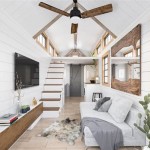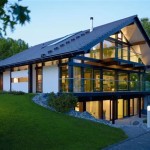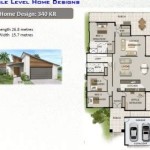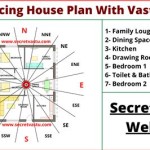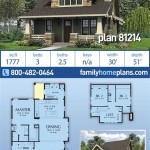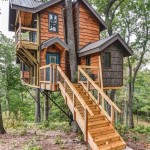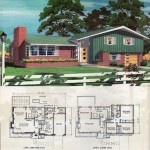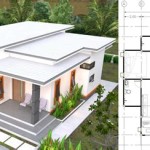Compact House Plans: Essential Aspects of Modern Design
Compact house plans have gained immense popularity in modern architecture due to their efficiency, functionality, and aesthetic appeal. These homes are designed to maximize space and natural light while minimizing the overall footprint. Here are some essential aspects to consider when choosing or designing compact house plans:
1. Space Planning and Utilization
Efficient space planning is crucial in compact homes. Every room and area should be carefully planned to maximize functionality and flow. Open floor plans, built-in storage, and multifunctional spaces can help create a sense of spaciousness. Consider using vertical space with loft bedrooms, mezzanines, and built-in shelves to optimize storage.
2. Natural Light and Ventilation
Natural light plays a vital role in compact homes, as it can make spaces feel larger and brighter. Large windows, skylights, and open spaces allow ample sunlight to enter the home. Proper ventilation is also essential to maintain a comfortable and healthy living environment. Cross-ventilation through strategically placed windows and doors promotes airflow and reduces energy consumption.
3. Smart Storage Solutions
Storage is a key consideration in compact homes. Built-in cabinetry, under-bed storage, and concealed compartments help utilize every available space. Vertical storage solutions, such as tall bookcases and wall-mounted shelves, can maximize storage capacity without taking up floor space. Consider multifunctional furniture that serves multiple purposes, such as a sofa with built-in storage or a coffee table that doubles as a dining table.
4. Energy Efficiency
Compact homes often prioritize energy efficiency to reduce utility bills and environmental impact. Energy-efficient appliances, LED lighting, and high-performance windows and insulation can significantly lower energy consumption. Solar panels, geothermal heating, and rainwater harvesting systems are sustainable options that can further enhance energy efficiency.
5. Outdoor Living Spaces
Even in compact homes, it's essential to consider outdoor living spaces. Patios, balconies, or small gardens can provide an extension of the home and offer a private oasis for relaxation and entertainment. Vertical gardens or hanging plants can add greenery and create a sense of outdoor connectivity without taking up valuable ground space.
6. Adaptability and Flexibility
Consider the future when designing a compact home. Adaptable and flexible spaces can accommodate changing needs over time. Multipurpose rooms, convertible furniture, and movable partitions allow the home to transform and adjust to different uses as lifestyles evolve.
7. Aesthetic Appeal and Design
While functionality is paramount, aesthetic appeal should not be neglected. Compact homes can be designed with stylish and contemporary elements. Clean lines, modern materials, and thoughtful lighting can create a visually pleasing and inviting living space. Consider the overall aesthetic and how it complements the surroundings.
Conclusion
Compact house plans offer a sustainable and efficient approach to modern living. By considering essential aspects like space planning, natural light, smart storage, energy efficiency, outdoor living spaces, adaptability, and aesthetic appeal, you can design a compact home that meets your needs and enhances your living experience.

Modern Style On A Budget 10 Tiny Cool House Plans Houseplans Blog Com

Tiny Modern House Plans Small And Floor

Casita Plan Small Modern House 61custom Contemporary Plans

Less Is More Small House Plans With Open Layouts Blog Builderhouseplans Com

Best Ing Small House Plans Mark Stewart Modern Home Design

12 Most Amazing Small Contemporary House Designs Modern Design Plans Home

Small Modern Home Plans The House Designers

Modern Open Floor House Plans Blog Eplans Com

Modern Style On A Budget 10 Tiny Cool House Plans Houseplans Blog Com

10 Small House Plans With Open Floor Blog Homeplans Com

